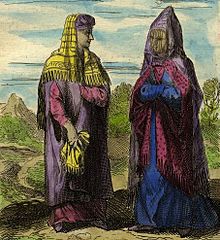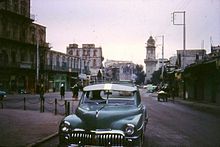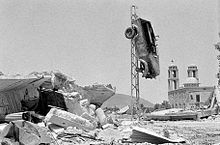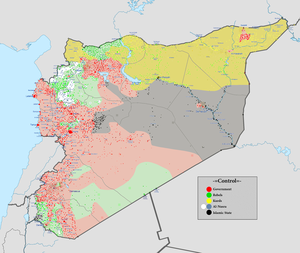There is no doubt that the infamous attacks on the World Trade Center and the Pentagon on September 11, 2001 constituted the most definitive moment in modern history. On that frenetic day the world stood still; frozen in time as gruesome memories were etched in our collective psyches for eternity. It was on that day that an elusive, shadowy figure named Osama bin Laden, (who hitherto was considered a parenthetical nemesis) was suddenly and unceremoniously plucked from historical obscurity and catapulted head first into the global amphitheater.
In the days and weeks to follow, we learned of such organizations as al-Qaeda and the Taliban; predicated on a doctrine of religious fanaticism and unadulterated hatred for all things Western; namely the United States. The names and motives seemed more enigmatic to us than the countries in which they originated in, but there was one thing we knew: The man at the helm of this agglomeration of barbaric zealots was responsible for the murder of close to 3000 Americans and it was he that represented an existential peril to the freedoms and liberties that we hold so dear.
So now, it is 12years later, and the wretched life of Osama bin Laden has been snuffed out through the legendary doughtiness of US Navy SEALS in a far away compound in Pakistan. Six days after the 9/11 attacks, a reporter queried then President George W. Bush if he wanted bin Laden dead. “I want him — I want justice,” the president answered. “And there’s an old poster out West, as I recall, that said, ‘Wanted: Dead or Alive.’” We can take some comfort in knowing that the last face that bin Laden saw before his long awaited demise was that of an American serviceman. Over the last 10 years, we have witnessed bin Laden displaying an unabashed insouciance towards the righteous indignation of the US and the free world in a series of grotesque videos that he's released. While endlessly taunting his American adversary; he has also launched acrimonious salvos that are replete with clear indications of future attacks of this magnitude.
While President Obama can use this as a feather in his cap , we know that timing is a strange thing and only through a fortuitous confluence of events did US intelligence ultimately pinpoint bin Laden's location and exact long awaited justice. On that note, Pakistan still has a lot of explaining to do as it has been revealed that they knew of bin Laden's whereabouts for years while remaining criminally mum on the subject and playing a sinister double game with the United States.
Despite the jubilant news that this foreboding paradigm of evil incarnate has been eradicated, it would be foolhardy to believe that bin Laden's brainchild, namely al-Qaeda, was buried along next to him the North Arabian sea. Al-Qaeda is alive and well, as we've so painfully learned during our military involvement in Iraq. We need only turn our heads to the deadly civil strife plaguing Libya to comprehend that al-Qaeda cells have created an unholy partnership with the NATO backed rebel forces. Only the politically myopic would promulgate the erroneous and dangerous notion that the killing of bin Laden is tantamount to the final chapter of al-Qaeda history and those that emulate their pernicious ethos.
We must remain cognizant of the fact that al-Qaeda will maintain its status as a multinational purveyor of terrorism unless the US remains vigilant in their quest to do real battle with this seemingly intractable foe. At this juncture, we're riding a superlative wave of national pride and inspiration. Let's capitalize on this euphoria, lest we backslide into complacency by listening to the inexhaustably loquacious liberal rantings of certain political pundits and other opinionistas with a skewed perspective on justice.
Al-Qaeda, under bin Laden's leadership, has declared the entire world as fair territory in their holy war against those "recalcitrant" infidels. Let us remember the tourist spots that were bombed in Bali and the passenger trains that were likewise bombed in Spain. Let us never forget the 17 sailors murdered on the USS Cole warship in 2000 and the scores of other US military personnel who were murdered in Somalia, Saudi Arabia, Afghanistan and Iraq.
Let us remember that prior to 9/11, al-Qaeda was implicated in the first attack on the World Trade Center in 1993, an aborted plot to hijack a dozen jets, the bombing of the Khobar Towers in Saudi Arabia and a plan to crash a plane into the CIA headquarters and murder President Bill Clinton. Let us also take heed of the fact that al-Qaeda operatives have successfully insinuated themselves into the fabric of the very Western culture that they ostensibly abhor, utilizing technological advancements to further their objectives of global domination.
Case in point: Reports reveal that bin Laden issued "fatwas" (religious decrees) by fax as he lived a purportedly Muslim ascetic existence while declaring his war on Americans through an e-mail that he had beamed by satellite around the world. His al-Qaeda members routinely communicate through encrypted messages on their computers and use CDs to store their bomb-making manuals. Let's face the cold, hard facts. We're not exactly dealing with a rag tag cadre of rogues who are running the revolution from an undisclosed boiler room.
And now..........Syria:-
Ottoman Syria
Main article: Ottoman Syria
In 1516, the Ottoman Empire invaded the Mamluk Sultanate of Egypt, conquering Syria, and incorporating it into its empire. The Ottoman system was not burdensome to Syrians because the Turks respected Arabic as the language of the Koran, and accepted the mantle of defenders of the faith. Damascus was made the major entrepot for Mecca, and as such it acquired a holy character to Muslims, because of the beneficial results of the countless pilgrims who passed through on the hajj, the pilgrimage to Mecca.]Ottoman administration followed a unique system that lead to a peaceful coexistence for centuries. Each religious minority—Shia Muslim, Greek Orthodox, Maronite, Armenian, and Jewish—constituted a millet. The religious heads of each community administered all personal status law and performed certain civil functions as well.
In the midst of World War I, two Allied diplomats (Frenchman François Georges-Picot and Briton Mark Sykes) secretly agreed on the post-war division of the Ottoman Empire into respective zones of influence in the Sykes-Picot Agreement of 1916. Initially, the two territories were separated by a border that ran in an almost straight line from Jordan to Iran. However, the discovery of oil in the region of Mosul just before the end of the war led to yet another negotiation with France in 1918 to cede this region to 'Zone B', or the British zone of influence. This border was later recognized internationally when Syria became a League of Nations mandate in 1920 and has not changed to date.
French Mandate
Main article: French Mandate for Syria and Lebanon
In 1925, Sultan al-Atrash led a revolt that broke out in the Druze Mountain and spread to engulf the whole of Syria and parts of Lebanon. Al-Atrash won several battles against the French, notably the Battle of al-Kafr on 21 July 1925, the Battle of al-Mazraa on 2–3 August 1925, and the battles of Salkhad, al-Musayfirah and Suwayda. France sent thousands of troops from Morocco and Senegal, leading the French to regain many cities, although resistance lasted until the spring of 1927. The French sentenced Sultan al-Atrash to death, but he had escaped with the rebels to Transjordan and was eventually pardoned. He returned to Syria in 1937 after the signing of the Syrian-French Treaty.
Syria and France negotiated a treaty of independence in September 1936, and Hashim al-Atassi was the first president to be elected under the first incarnation of the modern republic of Syria. However, the treaty never came into force because the French Legislature refused to ratify it. With the fall of France in 1940 during World War II, Syria came under the control of Vichy France until the British and Free French occupied the country in the Syria-Lebanon campaign in July 1941. Continuing pressure from Syrian nationalists and the British forced the French to evacuate their troops in April 1946, leaving the country in the hands of a republican government that had been formed during the mandate.
Independence
Shishakli eventually abolished multipartyism altogether, but was himself overthrown in a 1954 coup and the parliamentary system was restored. However, by this time, power was increasingly concentrated in the military and security establishment.The weakness of Parliamentary institutions and the mismanagement of the economy led to unrest and the influence of Nasserism and other ideologies. There was fertile ground for various Arab nationalist, Syrian nationalist, and socialist movements, which represented disaffected elements of society. Notably included were religious minorities, who demanded radical reform.
In November 1956, as a direct result of the Suez Crisis, Syria signed a pact with the Soviet Union. This gave a foothold for Communist influence within the government in exchange for military equipment.Turkey then became worried about this increase in the strength of Syrian military technology, as it seemed feasible that Syria might attempt to retake İskenderun. Only heated debates in the United Nations lessened the threat of war.
On 1 February 1958, Syrian President Shukri al-Quwatli and Egypt's Nasser announced the merging of Egypt and Syria, creating the United Arab Republic, and all Syrian political parties, as well as the communists therein, ceased overt activities.Meanwhile, a group of Syrian Ba'athist officers, alarmed by the party’s poor position and the increasing fragility of the union, decided to form a secret Military Committee; its initial members were Lieutenant-Colonel Muhammad Umran, Major Salah Jadid and Captain Hafez al-Assad. When Syria seceded on 28 September 1961, the ensuing instability culminated in the 8 March 1963 coup. The takeover was engineered by members of the Arab Socialist Ba'ath Party. The new cabinet was dominated by Ba'ath members.
Ba'athist Syria
On 23 February 1966, the Military Committee carried out an intra-party overthrow, imprisoned President Amin Hafiz and designated a regionalist, civilian Ba'ath government on 1 March.[33] Although Nureddin al-Atassi became the formal head of state, Salah Jadid was Syria's effective ruler from 1966 until 1970.[36] The coup led to a split within the original pan-Arab Ba'ath Party: one Iraqi-led ba'ath movement (ruled Iraq from 1968 to 2003) and one Syrian-led ba'ath movement was established.Conflict over the cultivation of disputed lands sparked into 7 April prewar aerial clashes between Israel and Syria.[37] After Israel launched a preemptive strike on Egypt to begin the June 1967 war, Syria joined the battle against Israel as well. In the final days of the war, Israel turned its attention to Syria, capturing the entire Golan Heights in under 48 hours.[38] The defeat caused a split between Jadid and Assad over what steps to take next.[39]
On 6 October 1973, Syria and Egypt initiated the Yom Kippur War against Israel. The Israel Defense Forces reversed the initial Syrian gains and pushed deeper into Syrian territory.[42]
In early 1976, Syria entered Lebanon, beginning the thirty-year Syrian military occupation. Over the following 15 years of civil war, Syria fought for control over Lebanon, and attempted to stop Israel from taking over in southern Lebanon, through extensive use of proxy militias. Syria then remained in Lebanon until 2005.
In the late 1970s, an Islamic uprising by the Muslim Brotherhood was aimed against the government. Islamists attacked civilians and off-duty military personnel, and civilians were also killed in retaliatory strike by security forces. The uprising had reached its climax in the 1982 Hama massacre when some 10,000 - 40,000 people were killed by regular Syrian Army troops.
In a major shift in relations with both other Arab states and the Western world, Syria participated in the US-led Gulf War against Saddam Hussein. Syria participated in the multilateral Madrid Conference of 1991, and during the 1990s engaged in negotiations with Israel. These negotiations failed, and there have been no further direct Syrian-Israeli talks since President Hafez al-Assad's meeting with then President Bill Clinton in Geneva in March 2000.
On 5 October 2003, Israel bombed a site near Damascus, claiming it was a terrorist training facility for members of Islamic Jihad.In March 2004, Syrian Kurds and Arabs clashed in the northeastern city of al-Qamishli. Signs of rioting were seen in the towns of Qameshli and Hassakeh.[49] In 2005, Syria ended its occupation of Lebanon. On 6 September 2007, Israeli jet fighters carried out Operation Orchard against a suspected nuclear reactor under construction by North Korean technicians.
The ongoing Syrian civil war was inspired by the Arab Spring Revolutions. It began in 2011 as a chain of peaceful protests, followed by a crackdown by the Syrian Army.[52] In July 2011, army defectors declared the formation of the Free Syrian Army and began forming fighting units. The opposition is dominated by Sunni Muslims, whereas the leading government figures are Alawites.According to various sources, including the United Nations, up to 100,000 people have been killed. To escape the violence, over 1.7 million Syrian refugees have fled to neighboring countries of Jordan, Iraq, Lebanon, and Turkey. As the civil war has dragged on, there have been worries that the country could become fragmented and cease to function as a state.
In early September 2013, President Obama told U.S. Senators that the CIA had trained the first 50-man insurgent element and that they had been inserted into Syria. The deployment of this unit and the supplying of weapons may be the first tangible measure of support since the U.S. stated they would begin providing assistance to the opposition.
Above Syria components copied from Wikipedia...




